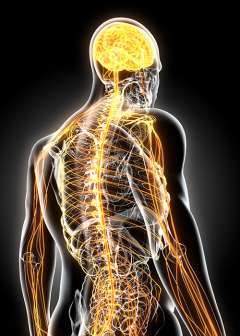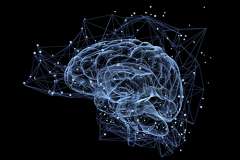Neurosurgical Anesthesiology

The Neuroanesthesia Division supports the perioperative clinical care of patients with neurologic disease throughout the UCLA Health System. The physician anesthesiologists on the team provide anesthesia care for patients undergoing elective, urgent and emergency neurosurgical and neuro-interventional procedures. The anesthesia care of infants and children undergoing neurosurgery procedures is provided jointly by neuroanesthesia and pediatric anesthesia faculty.
In collaboration with colleagues from neurosurgery, neurophysiology, critical care, radiology, neurology and nursing, we provide care for adults and children undergoing a wide variety of diagnostic and therapeutic procedures for the treatment of neurologic disorders including intracranial aneurysms and arteriovenous malformations, stroke, epilepsy, brain tumors, hydrocephalus, spastic cerebral palsy, Chiari malformation, movement disorders, and diseases of the spine.
The majority of neurosurgery procedures are performed at Ronald Reagan Medical Center (RRMC), in two to five operating rooms per day. Currently more neurosurgical spine procedures are performed at UCLA’s Santa Monica Hospital, and more intracranial neurosurgical procedures are performed at RRMC. Overall neurosurgery case volume is approximately 1200 cases per year; the number of cases performed at Santa Monica and at the Ambulatory Surgery Center at Westwood has grown substantially over the past five years.
The Division participates in care coordination for patients whose cases are complex and require special consideration. This process is initiated by referral from the Neurosurgery Department, the Perioperative Evaluation and Planning Center (PEPC), and the Complex Care Team. Care coordination involves shared assessment, shared decision making, patient optimization and intra-disciplinary planning.
The Division is involved in translating best clinical practices into patient care pathways for neurosurgical and neuro-interventional procedures. As examples, the Division has participated in the creation and implementation of interdisciplinary perioperative management pathways for acute stroke management, complex spine, and perioperative pain.
The Division also is involved in the advanced planning for anesthesia care for neurosurgical procedures that incorporate new technology, new venues, or new monitoring and neurosurgery research protocols. Recent examples include the introduction of intraoperative CT scanning, and laser ablation of intracranial mass lesions in the MRI suite.
Residents in the Department of Anesthesiology and Perioperative Medicine are well prepared for future practice through education programs supported by the Division. Graduating residents easily surpass the ACGME required quota on open intracerebral non-vascular, vascular, and endovascular case requirements. Neuroanesthesia faculty participate in clinical teaching, board review, simulation, mentorship, didactic sessions and journal club. Residents gain substantial clinical experience providing anesthesia for a wide variety of neurosurgical and neuro interventional procedures in adults and children during clinical and call rotations. Graduated residents report that they are very well prepared for subsequent practice. The Division offers a non-ACGME fellowship track for advanced training. The curriculum and educational objectives reflect recommendations of the International Council on Perioperative Neuroscience Training and the Society for Neuroscience in Anesthesiology and Critical Care.

Research
Our faculty in the Division of Neurosurgical Anesthesiology are advancing the understanding of the neuroscience of anesthesia, sleep, consciousness, perioperative cognitive decline, and the neurologic sequelae of COVID-19. We are working to improve our understanding of adverse neurologic outcomes of non-neurosurgical operations, and to improve clinical care through innovation, systematic evaluation of outcomes, and better control of postoperative pain. Research within the division spans from bench to bedside. Early investigators have support from KO8 and K23 NIH grants.
Basic science research focuses on the mechanisms of general anesthetics at the circuit level, studying how anesthetics change activity patterns within cortical and subcortical circuits, and the resulting dynamics during anesthesia and recovery of consciousness. The Hudson Laboratory is investigating the electrical activity of individual neuron populations at different levels of anesthesia. The cellular biology and pathways of persistent inflammation are other key areas of inquiry.
At the translational level, our faculty’s research focuses on the ways in which recovery of consciousness can go awry, with an emphasis on the intersection of inflammation, delirium, and postoperative cognitive dysfunction. Dr. Susana Vacas and colleagues are investigating cognitive outcomes after general anesthesia. This work includes identifying vulnerable patient populations and designing clinically appropriate interventions to mitigate cognitive dysfunction. In collaboration with Neurology and Interventional Radiology, Division faculty are investigating the effects of carbon dioxide tension on stroke outcomes for acute stroke patients undergoing anesthesia for endovascular thrombectomy. Division faculty also participate as collaborators in clinical research on EEG signatures in patient with intractable epilepsy, and glucose uptake in brain tumors; faculty work in support of neurosurgery research protocols that involve any modification of anesthesia care.
Our faculty have played a key role in the development of the American Society of Anesthesiology’s Brain Health Initiative, and we are part of a multicenter consortium dedicated to the study of how intraoperative management affects brain health after anesthesia. Division faculty participate also in other professional societies to advance the specialty; our faculty serve on the education committee and the clinical affairs committee of the Society of Neuroscience in Anesthesia and Clinical Care.
Our faculty team
Faculty who contribute to the clinical, teaching, administration, consultation, mentoring, and research activities of the Division of Neurosurgical Anesthesiology include:
Director:
Faculty: